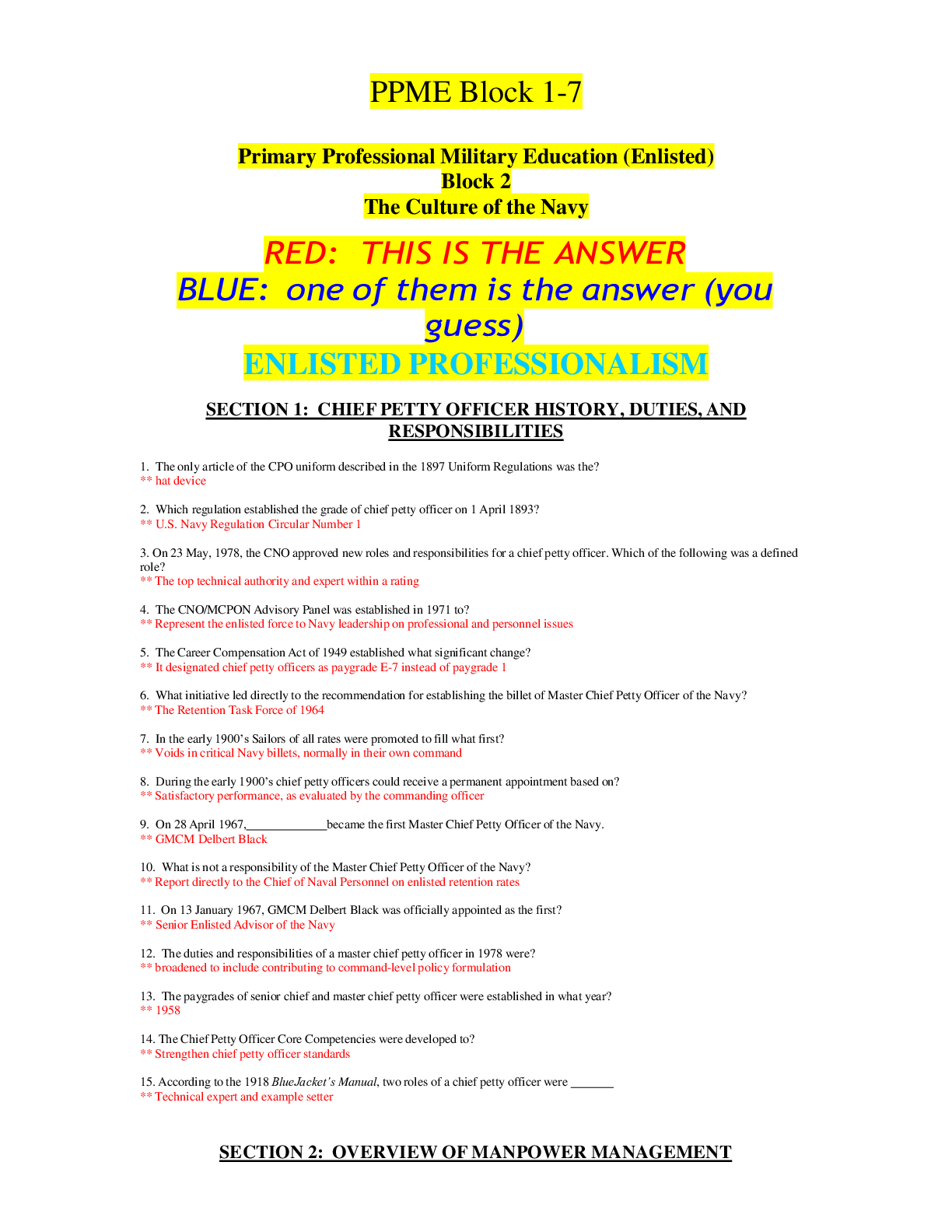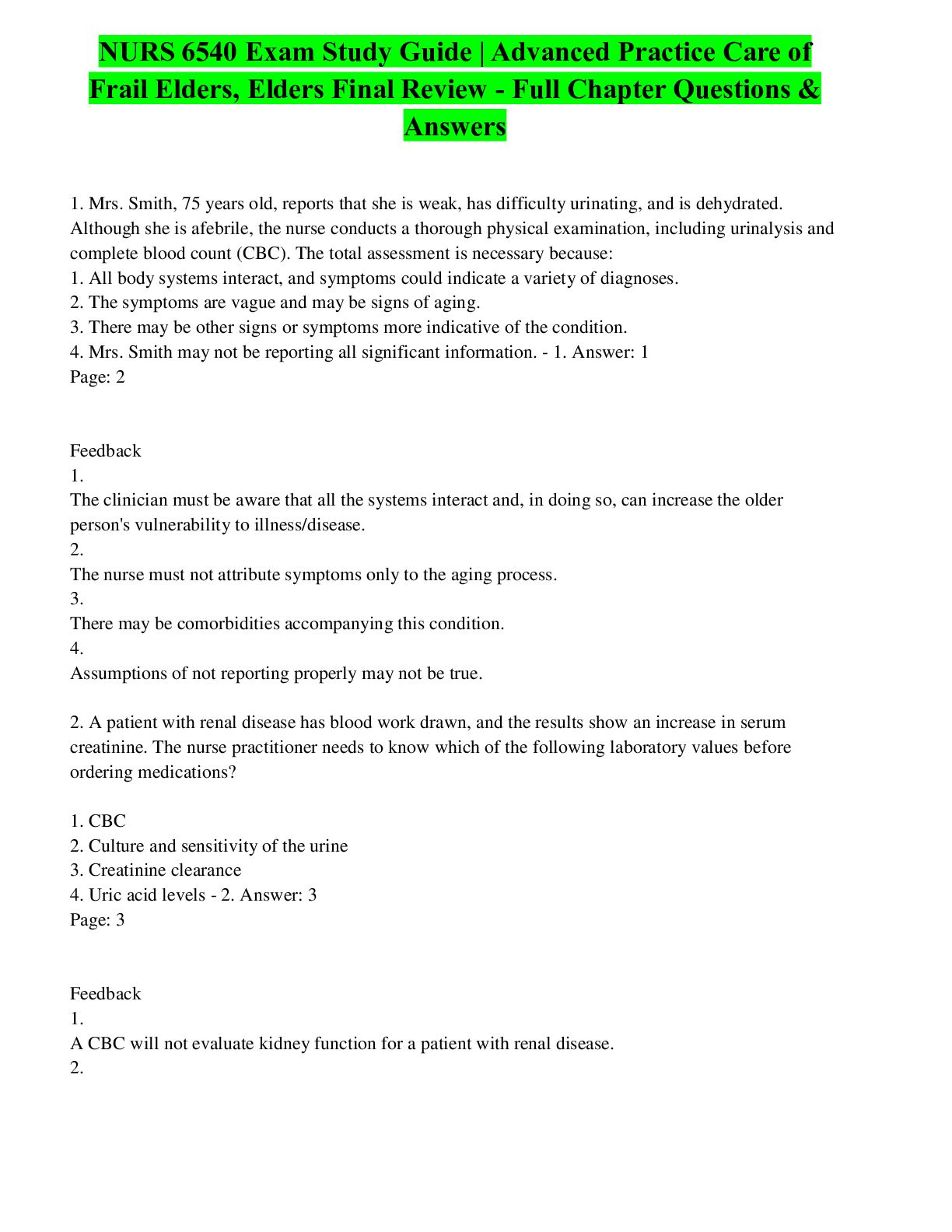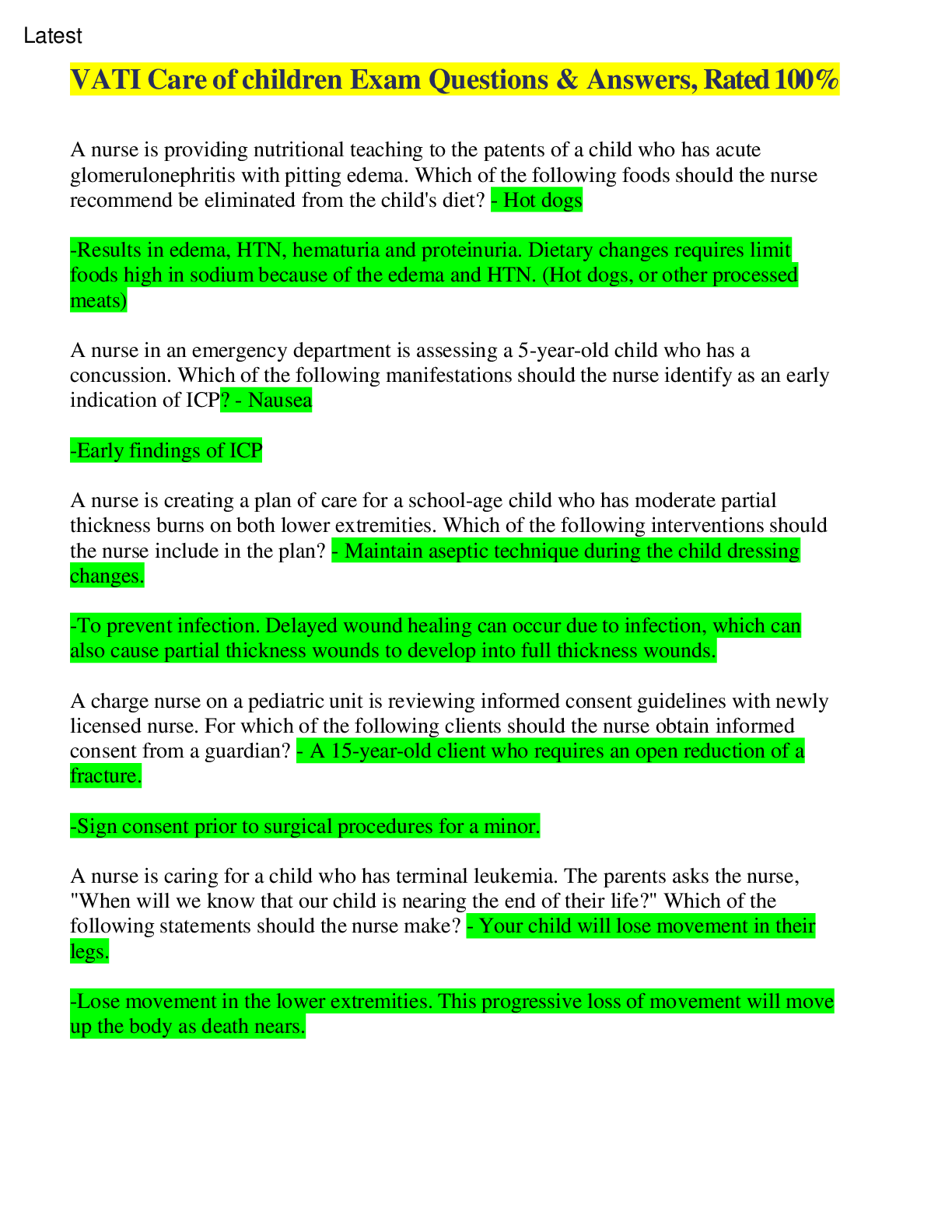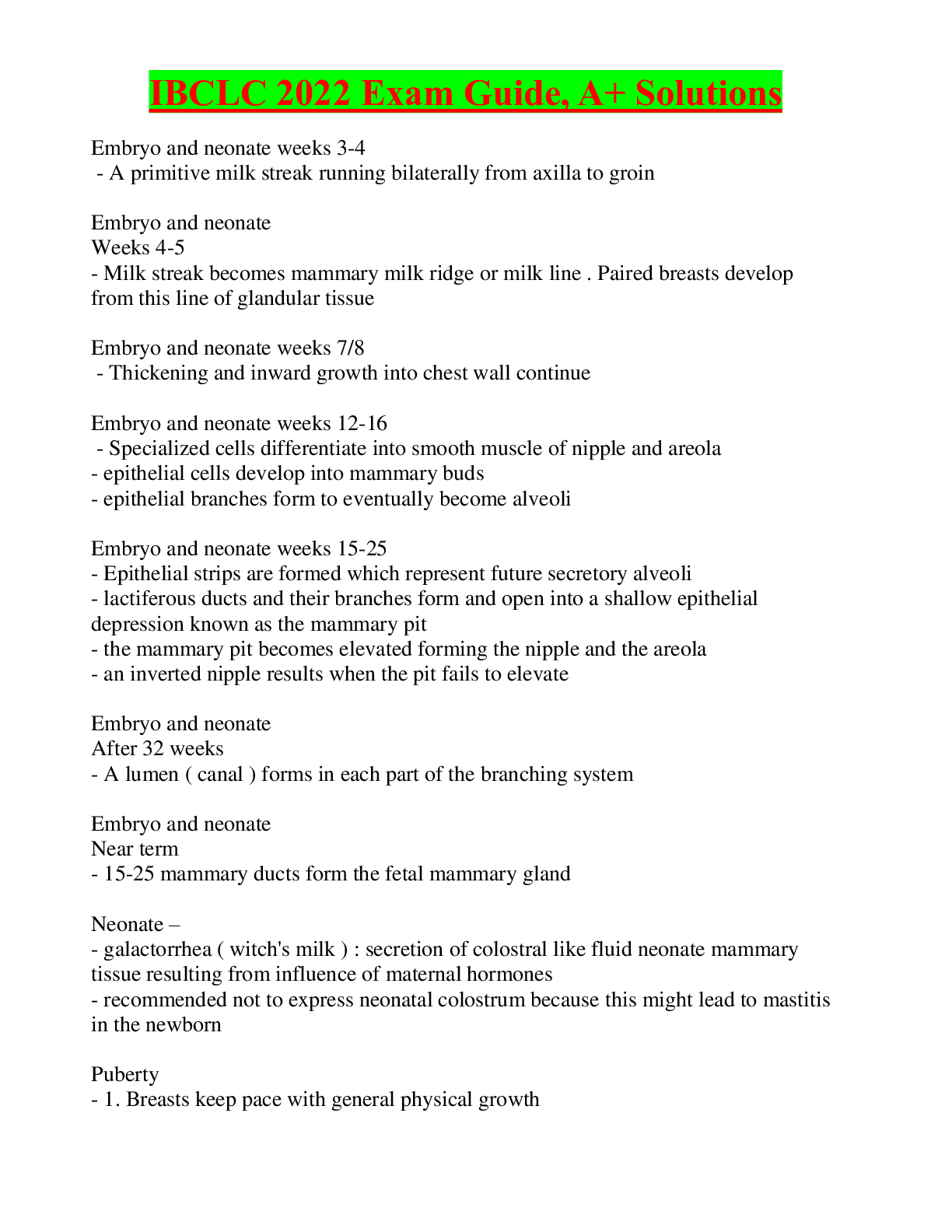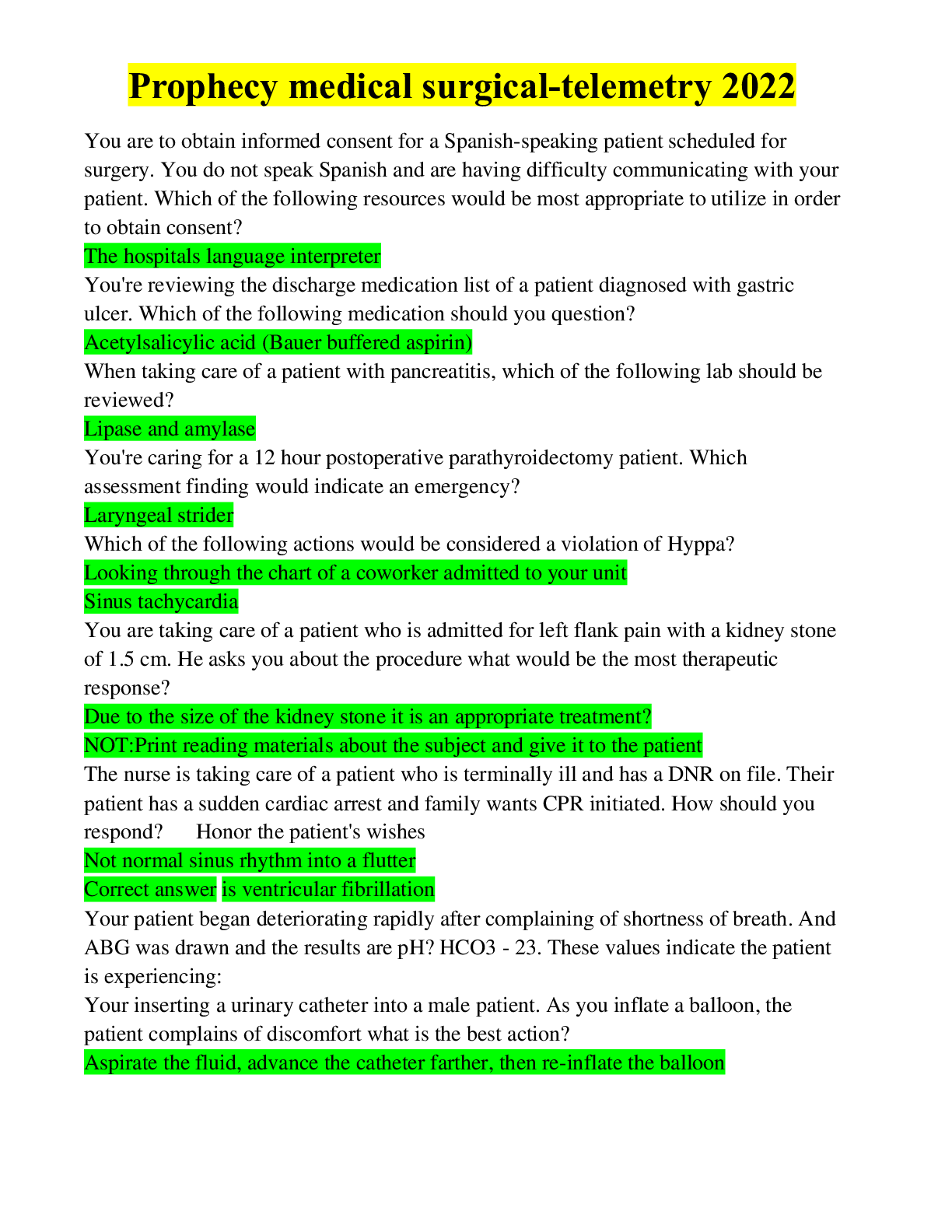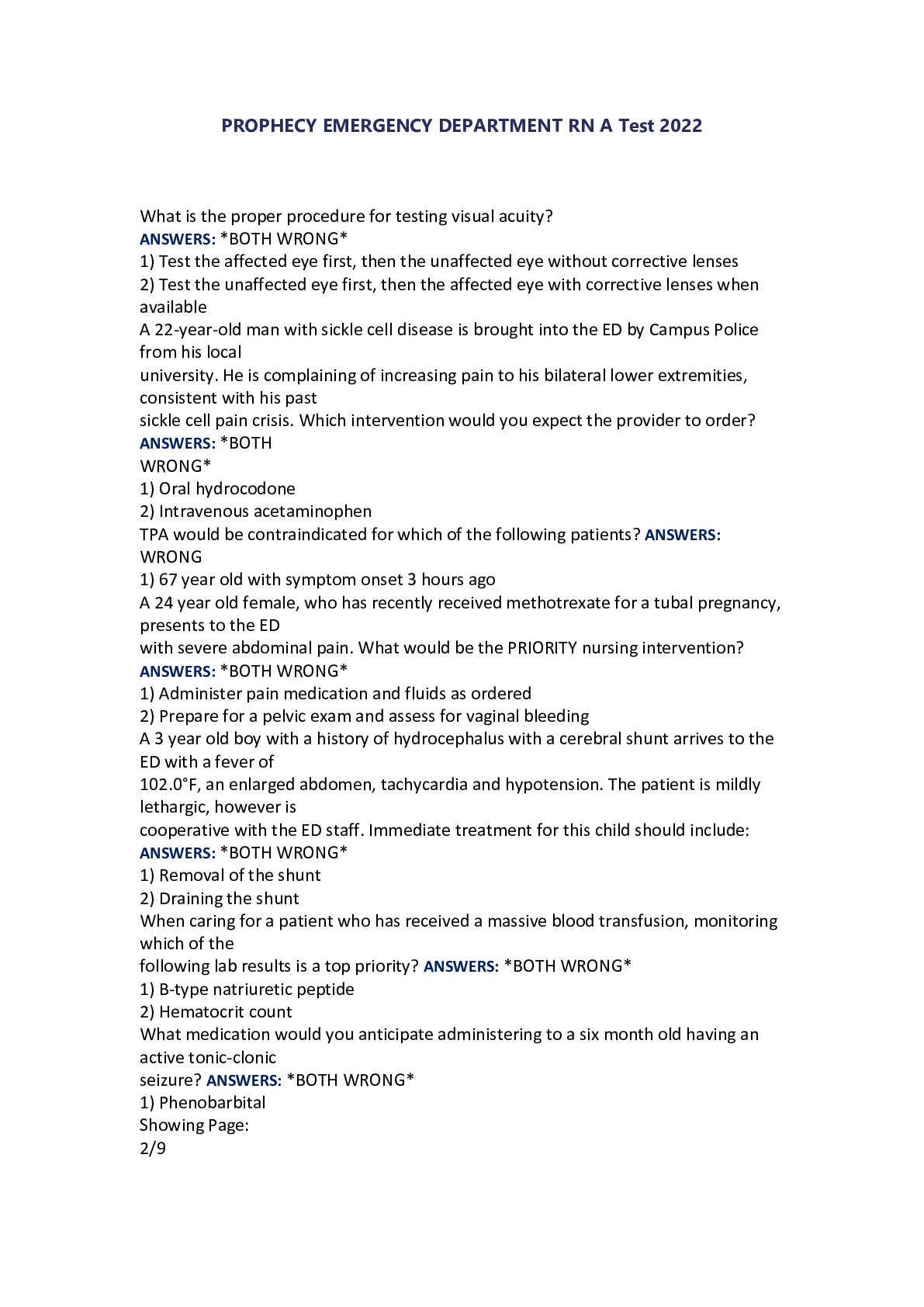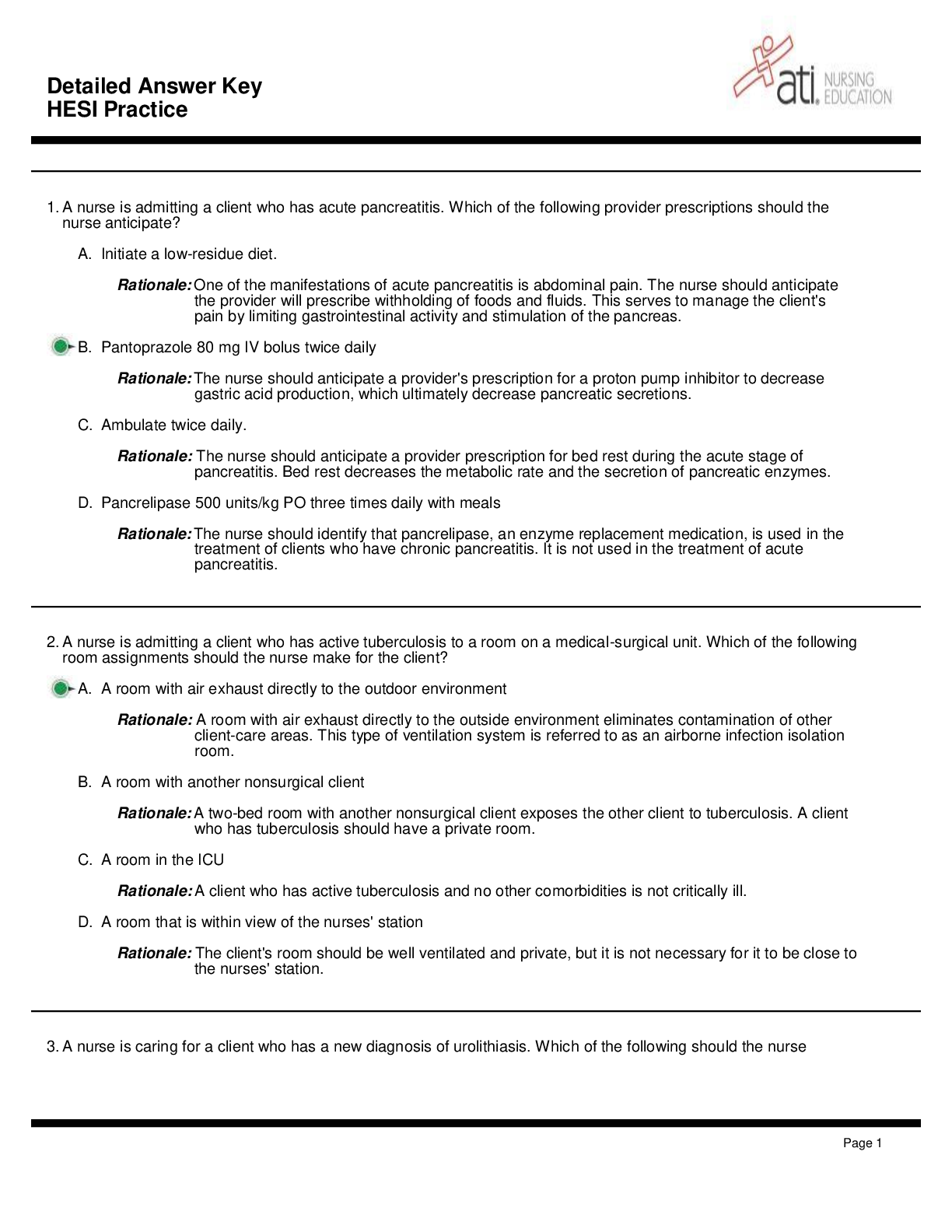ADULT HESI CUMULATIVE QUESTIONS & ANSWERKEY With Rationales
Document Content and Description Below
ADULT HESI CUMULATIVE QUESTIONS & ANSWERKEY With Rationales-1.A nurse is admitting a client who has acute pancreatitis. Which of the following provider prescriptions should the nurse anticipate? A. In... itiate a low-residue diet. Rationale: One of the manifestations of acute pancreatitis is abdominal pain. The nurse should anticipate the provider will prescribe withholding of foods and fluids. This serves to manage the client's pain by limiting gastrointestinal activity and stimulation of the pancreas. B. Pantoprazole 80 mg IV bolus twice daily Rationale: The nurse should anticipate a provider's prescription for a proton pump inhibitor to decrease gastric acid production, which ultimately decrease pancreatic secretions. C. Ambulate twice daily. Rationale: The nurse should anticipate a provider prescription for bed rest during the acute stage of pancreatitis. Bed rest decreases the metabolic rate and the secretion of pancreatic enzymes. D. Pancrelipase 500 units/kg PO three times daily with meals Rationale: The nurse should identify that pancrelipase, an enzyme replacement medication, is used in the treatment of clients who have chronic pancreatitis. It is not used in the treatment of acute pancreatitis. 2. A nurse is admitting a client who has active tuberculosis to a room on a medical-surgical unit. Which of the following room assignments should the nurse make for the client? A. A room with air exhaust directly to the outdoor environment Rationale: A room with air exhaust directly to the outside environment eliminates contamination of other client-care areas. This type of ventilation system is referred to as an airborne infection isolation room. B. A room with another nonsurgical client Rationale: A two-bed room with another nonsurgical client exposes the other client to tuberculosis. A client who has tuberculosis should have a private room. C. A room in the ICU Rationale: A client who has active tuberculosis and no other comorbidities is not critically ill. D. A room that is within view of the nurses' station Rationale: The client's room should be well ventilated and private, but it is not necessary for it to be close to the nurses' station. 3. A nurse is caring for a client who has a new diagnosis of urolithiasis. Which of the following should the nurse identify as an associated risk factor? A. Hypocalcemia Rationale: Hypercalcemia is a risk factor associated with urolithiasis. B. BMI less than 25 Rationale: Obesity, or having a BMI that is greater than 29, has been found to be a risk factor for the development of urolithiasis. C. Family history Rationale: Family history is strongly correlated with the formation of urolithiasis. A nurse should assess a client who has kidney stones for familial tendencies toward stone formation. D. Diuretic use Rationale: Medications such as antacids, vitamin D, laxatives, and aspirin have been associated with the formation of urolithiasis. However, there is no indication that the use of diuretics place a client at an increased risk for stone formation. 4. A nurse is assessing a client who has fluid overload. Which of the following findings should the nurse expect? (Select all that apply.) A. Increased heart rate B. Increased blood pressure C. Increased respiratory rate D. Increase hematocrit E. Increased temperature Rationale: Increased heart rate is correct. The nurse should expect the client who has fluid volume excess to have tachycardia and increased cardiac contractility in response to the excess fluid.Increased blood pressure is correct. The nurse should expect the client who has fluid volume excess to have increased blood pressure and bounding pulse in response to the excess fluid.Increased respiratory rate is correct. The nurse should expect the client who has fluid volume excess to have increase in respiratory rate and moist crackles heard in lungs.Increased hematocrit is incorrect. The nurse should expect the client who has fluid volume deficit to have an elevated hematocrit because of hemoconcentration.Increase temperature is incorrect. The nurse should expect the client who has fluid volume deficit to have an increase in temperature due to fluid loss. 5. A nurse is administering a tap water enema to a [Show More]
Last updated: 2 years ago
Preview 1 out of 71 pages
.png)
Buy this document to get the full access instantly
Instant Download Access after purchase
Buy NowInstant download
We Accept:

Reviews( 0 )
$13.50
Can't find what you want? Try our AI powered Search
Document information
Connected school, study & course
About the document
Uploaded On
Feb 05, 2023
Number of pages
71
Written in
Additional information
This document has been written for:
Uploaded
Feb 05, 2023
Downloads
0
Views
70


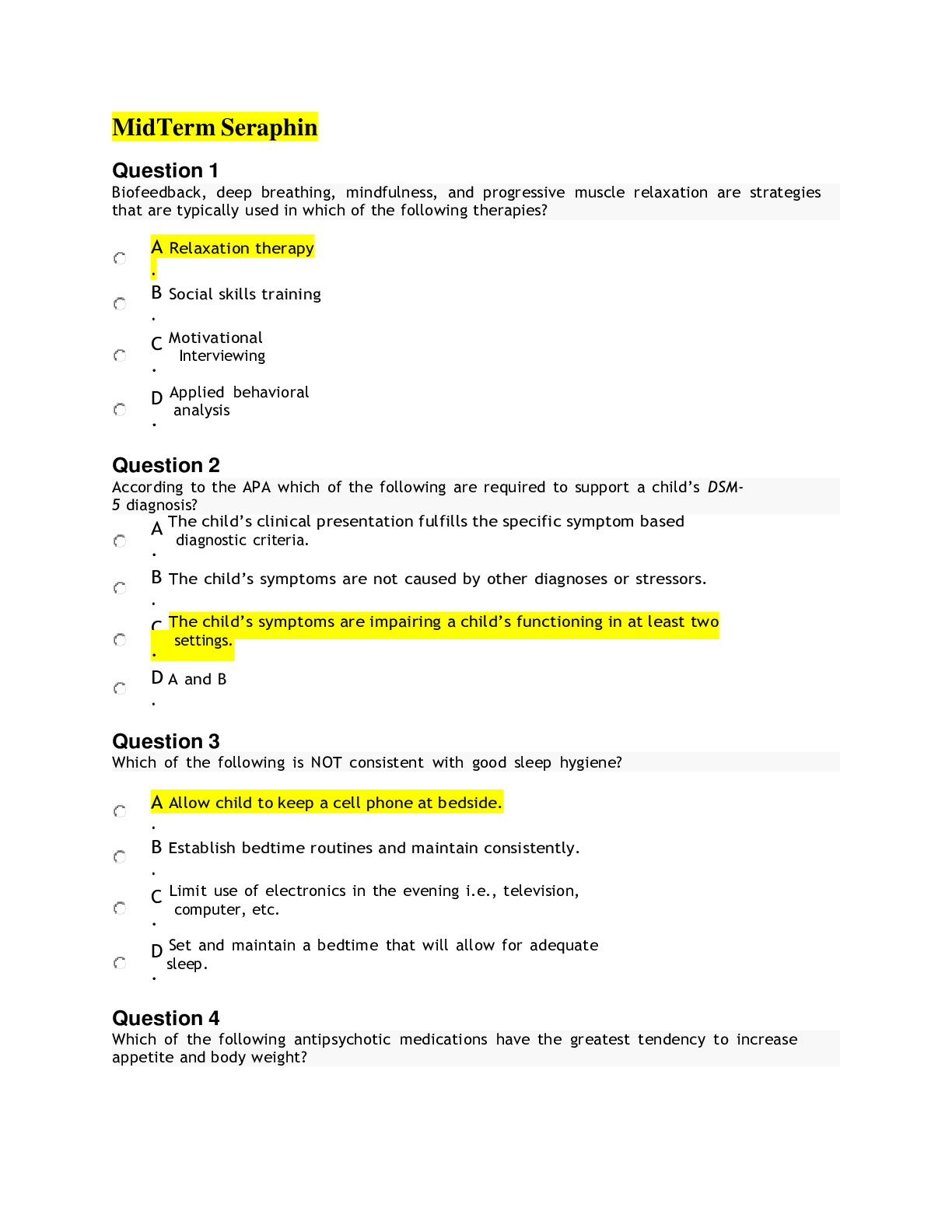
 Pediatrics Practice Exam-Answered.png)
